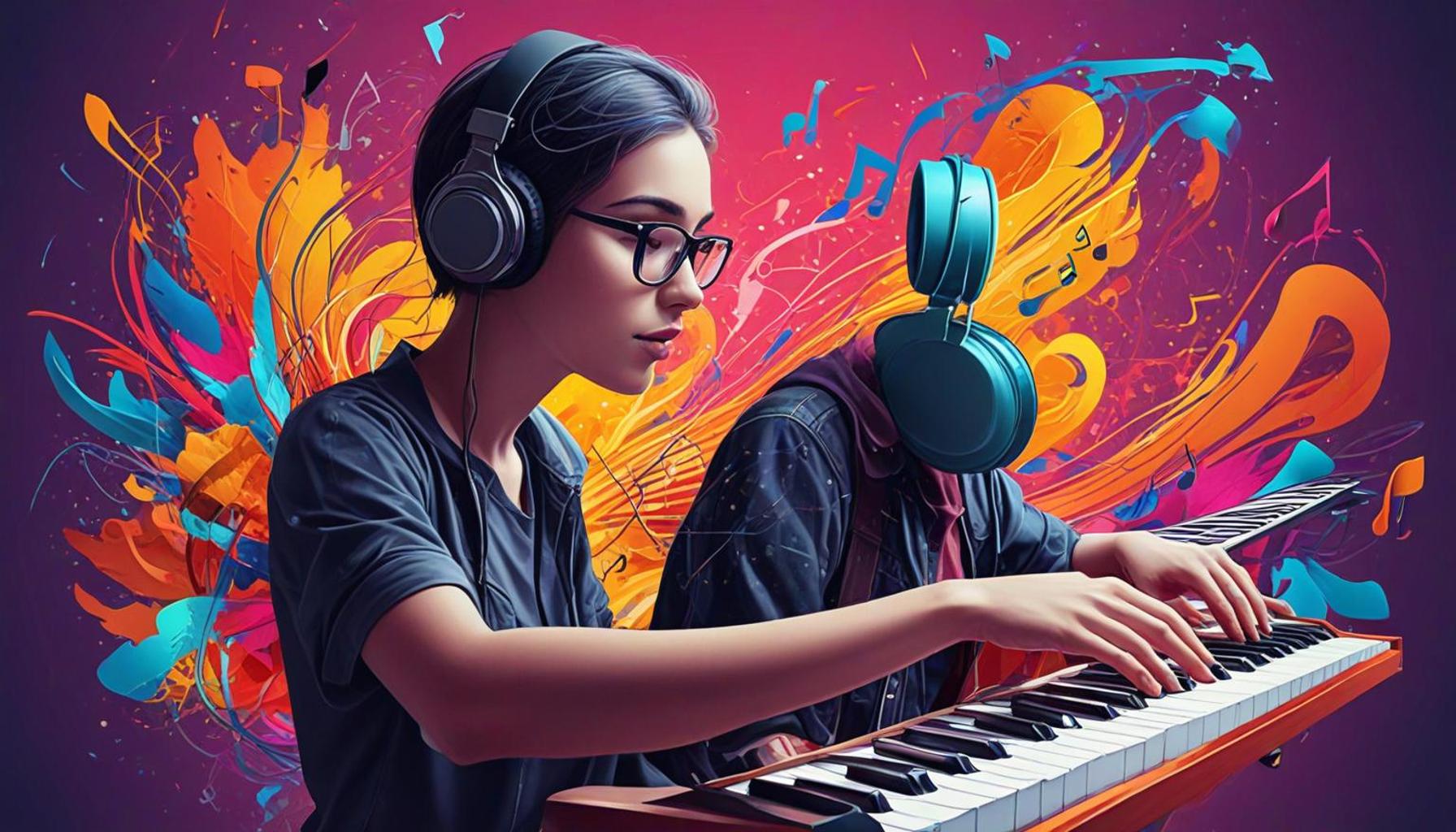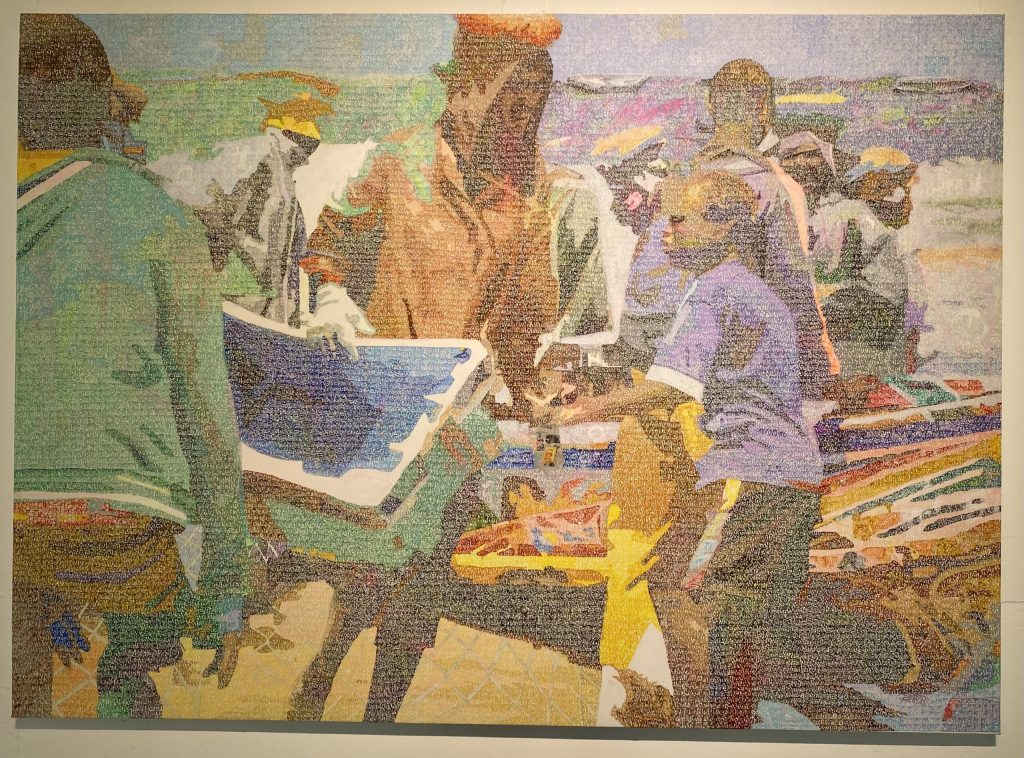Exploring the Intersection between Music and Visual Art: Creative Skills in Multimedia Projects

The Intersection of Music and Visual Art
The synergy between music and visual art is a vibrant sphere that continuously inspires creators across various platforms, igniting imaginations and forging new paths in artistic collaboration. By merging sound and imagery, artists craft multimedia projects that not only captivate audiences but also transport them into immersive worlds where the boundaries of each medium blur. This intersection enhances artistic expression and broadens the scope of storytelling, creating a powerful dialogue between the two forms.
Consider the ways in which these two art forms intertwine and complement each other:
- Film Soundtracks: The impact of music in cinema cannot be overstated. Composers like Hans Zimmer or John Williams have mastered the ability to elevate visual narratives through their scores, deepening emotional connections and enhancing the tension or joy of pivotal scenes. For example, the haunting notes of the score in “Schindler’s List” resonate with viewers long after the credits roll, illustrating music’s capacity to evoke profound emotional responses.
- Interactive Installations: In the realm of contemporary art, blending audio and visuals results in interactive installations that engage the senses and challenge perceptions. For example, artist team Kanariv & Gal has created experiences where attendees can manipulate soundscapes through their movements, thereby becoming part of the artwork. These installations stimulate participation, allowing visitors to experience art in a more hands-on manner, drawing them deeper into the environment.
- Live Performances: Artists often merge visual art with musical performances during concerts and festivals, creating multi-sensory events that captivate audiences. The Coachella Valley Music and Arts Festival, for example, showcases performances accompanied by intricate light displays and art installations that blend with live music. This combination enchants festival-goers, providing an unforgettable experience that lingers in their memories.
As technology advances, the tools available to artists evolve, enabling new forms of creativity and collaborative projects that defy traditional boundaries. Digital platforms like SoundCloud and Instagram encourage musicians and visual artists to collaborate from different corners of the globe, resulting in innovative works that fuse their unique strengths. This digital landscape fosters global connections and enriches the arts community.
In exploring this captivating intersection between music and visual art, we uncover the skills that enhance our understanding of both fields. Artists must be well-versed in various techniques, whether it’s mastering sound engineering or exploring visual design principles. The multifaceted nature of creative skills plays a crucial role in shaping multimedia experiences. By delving into these connections, we invite exploration and a deeper appreciation of the arts, encouraging both creators and audiences alike to discover new dimensions of expression.
DIVE DEEPER: Click here to discover more about the impact of artistic expression

Creative Skills that Bridge Music and Visual Art
The fusion of music and visual art is a dynamic interplay that demands an array of creative skills from the artists involved. As these two distinct yet complementary disciplines converge, artists must broaden their capabilities to create compelling multimedia projects. By understanding the nuances of both sound and sight, they can effectively communicate emotions, narratives, and ideas that resonate with audiences on multiple levels.
To effectively navigate the intersection of music and visual art, creators often employ a diverse skill set. Here are some essential skills that contribute to successful multimedia collaboration:
- Sound Design: A foundational element in the melding of music and visual art is sound design. Artists must be proficient in capturing and manipulating audio elements that align with their visual concepts. This skill includes understanding microphone techniques, audio editing software, and the subtleties of how sound impacts mood and perception in relation to visual stimuli.
- Visual Composition: Artists must also possess a keen understanding of visual design principles. This involves knowledge of color theory, composition, and the ways in which different visual elements interact. Creating imagery that enhances musical components requires a balance between aesthetic appeal and emotional impact, providing depth to the overall experience.
- Technical Proficiency: In the increasingly digital landscape of multimedia art, technical proficiency becomes vital. Artists often utilize software and tools that allow for integration between music and visuals, including programs like Adobe Creative Suite for graphics and Pro Tools or Logic Pro for audio production. Familiarity with these tools can elevate the quality of multimedia projects, making the collaboration seamless and impactful.
- Storytelling Techniques: At the heart of successful multimedia projects lies a compelling narrative. Artists must master storytelling techniques that transcend the confines of either medium, weaving together the aural and the visual into a cohesive experience. Understanding how to pace and structure a story can enhance the audience’s emotional journey, making it memorable and engaging.
Moreover, collaboration becomes a focal point within this intersection. Artists must cultivate interpersonal skills to engage with fellow creators, whether they are musicians, filmmakers, or visual designers. Constructive collaboration can lead to innovative concepts that neither party may have envisioned alone, pushing the boundaries of traditional art forms.
As audiences increasingly seek immersive experiences that challenge conventional viewing and listening habits, the demand for artists who can navigate the intersection of music and visual art is likely to grow. By honing their creative skills and embracing collaboration, artists can create powerful multimedia projects that enthrall and resonate, inviting audiences to explore the boundless possibilities at the nexus of sound and sight.
| Advantage | Description |
|---|---|
| Enhanced Creativity | Combining music and visual arts encourages innovative thinking, allowing for imaginative multimedia expressions. |
| Improved Collaboration | This intersection fosters team collaboration among artists, musicians, and technologists, creating a vibrant creative community. |
| Expanded Audience Reach | Multimedia projects can engage diverse audiences, appealing to both art lovers and music enthusiasts. |
Exploring the interplay between music and visual art in multimedia projects provides a transformative platform for artists and creators. By merging these two distinct art forms, creators can tap into a wealth of diverse techniques and perspectives, unlocking new avenues for self-expression. The focus shifts toward collaborative synergies, where musicians can contribute soundscapes that enliven visual artworks, while visual artists can enhance live performances with dynamic imagery. Furthermore, this fusion broadens the conceptual landscapes of creative skills, allowing individuals to experiment with various tools and mediums that were previously unimaginable. As we delve deeper, we uncover the profound impact this interdisciplinary approach has on cultural narratives and its role in promoting emotional connections through art. Those involved in such projects often find their work resonates on multiple levels, inviting the audience to experience art through a multifaceted lens.
DIVE DEEPER: Click here to uncover more about art and identity
Innovative Techniques in Multimedia Art
In the realm of multimedia art, artists are not only combining sound and visuals but also utilizing innovative techniques that enhance the sensory experience. This convergence not only captivates audiences but also stretches the boundaries of creativity. As curiosity in this niche grows, artists are discovering new methods that further intertwine music and visuals, consistently evolving the landscape of art.
One of the most exciting developments within this field is the use of augmented reality (AR) and virtual reality (VR)</strong). These technologies allow artists to create immersive environments where visual art interacts with sound in real-time. For instance, a visual artist can design a mural that transforms into an immersive world when viewed through a VR headset, harmonizing with a soundscape that echoes the emotional tone of the visuals. This technology not only shifts the audience's role from passive observers to active participants but also offers deeper emotional engagement through an enriched sensory experience.
Another compelling technique is the incorporation of data visualization in multimedia projects. By mapping audio frequency or rhythm to graphical elements, artists can create animations that respond dynamically to music. For example, a musician can collaborate with a visual artist to produce live performances where sound waves translate into moving images on a screen, creating a feedback loop that enhances both the auditory and visual experience. Projects like these not only highlight the synergy between music and visuals but also showcase the potential of technology to facilitate creativity.
Additionally, the use of live coding has emerged as a fascinating method to blend music and visual art in real time. Artists utilize programming languages to generate both sound and visuals instantaneously during performances. This technique allows for spontaneity and improvisation, where the audience witnesses the creation process unfold before their eyes, resulting in a unique and interactive experience. Live coding has gained traction in communities, such as those in the United States, where tech-savvy performers approach their craft as a form of digital art that embodies both musicality and visual creativity.
Cross-disciplinary workshops also play a pivotal role in fostering collaboration between musicians and visual artists. By offering platforms for artists to share skills and ideas, these workshops can lead to groundbreaking projects that draw on multiple forms of expression. Initiatives like these are becoming more prevalent in art schools and community centers across the U.S., encouraging emerging artists to explore and innovate at the intersection of these disciplines. Events such as “Hackathons for Art” focus specifically on merging technology, music, and visual art, driving collaboration and exploration of new ideas.
Importantly, as artists continue to experiment with innovative techniques, the role of social media cannot be overlooked. Platforms like Instagram and TikTok have become breeding grounds for multimedia projects, allowing artists to share their work with a global audience. As artists showcase their projects online, they not only build their own personal brand but also engage with communities that are enthusiastic about the intersection of sound and sight. This digital landscape fosters a spirit of collaboration, encouraging artists to push boundaries and create compelling multimedia stories that can inspire others to explore this exciting intersection.
DIVE DEEPER: Click here to discover more about the evolution of artistic expression
Conclusion
As we have explored, the intersection of music and visual art presents a rich canvas for creativity, giving rise to multimedia projects that are both innovative and engaging. The integration of technologies like augmented reality (AR), virtual reality (VR), and live coding is revolutionizing the way audiences experience art, allowing for deep emotional connections that transcend traditional boundaries. Artists are continually pushing the envelope through collaborations, utilizing data visualization to create dynamic interactions, and employing cross-disciplinary workshops that inspire new forms of expression.
The growing influence of social media has further amplified these initiatives, establishing a global platform where artists can share their works and ideas. This connectivity not only cultivates community engagement but also invites a collective exploration of how sound and sight can synergize to narrate compelling stories. As viewers become active participants in this ever-evolving landscape, they are encouraged to reflect on their sensory experiences, prompting a deeper appreciation for both music and visual artistry.
Ultimately, the future of multimedia projects at the intersection of these two disciplines holds unlimited potential for experimentation and innovation. As artists continue to explore new techniques and technologies, audiences will undoubtedly find themselves inspired to delve into this vibrant fusion of creativity. With every new project, we move closer to a time where the boundaries of artistic expression blur, leading to extraordinary experiences that resonate on multiple levels.
Related posts:
Exploring the Link Musical Skills Creativity in Other Arts
Developing Musical Skills Through Daily Practice
The importance of musical skills in the development of creativity in children
The Influence of Music on the Improvement of Cognitive Skills and Problem-Solving
Developing Musical Skills in Children: Games and Play Activities to Stimulate Creativity
Innovative Techniques for Learning Musical Instruments in Advanced Ages

Linda Carter is a writer and creative hobbies expert specializing in crafting, DIY projects, and artistic exploration. With extensive experience helping individuals discover their creative potential and bring their ideas to life, Linda shares her knowledge on our platform. Her goal is to empower readers with practical tips, inspiring ideas, and step-by-step strategies for success in the world of creative hobbies.